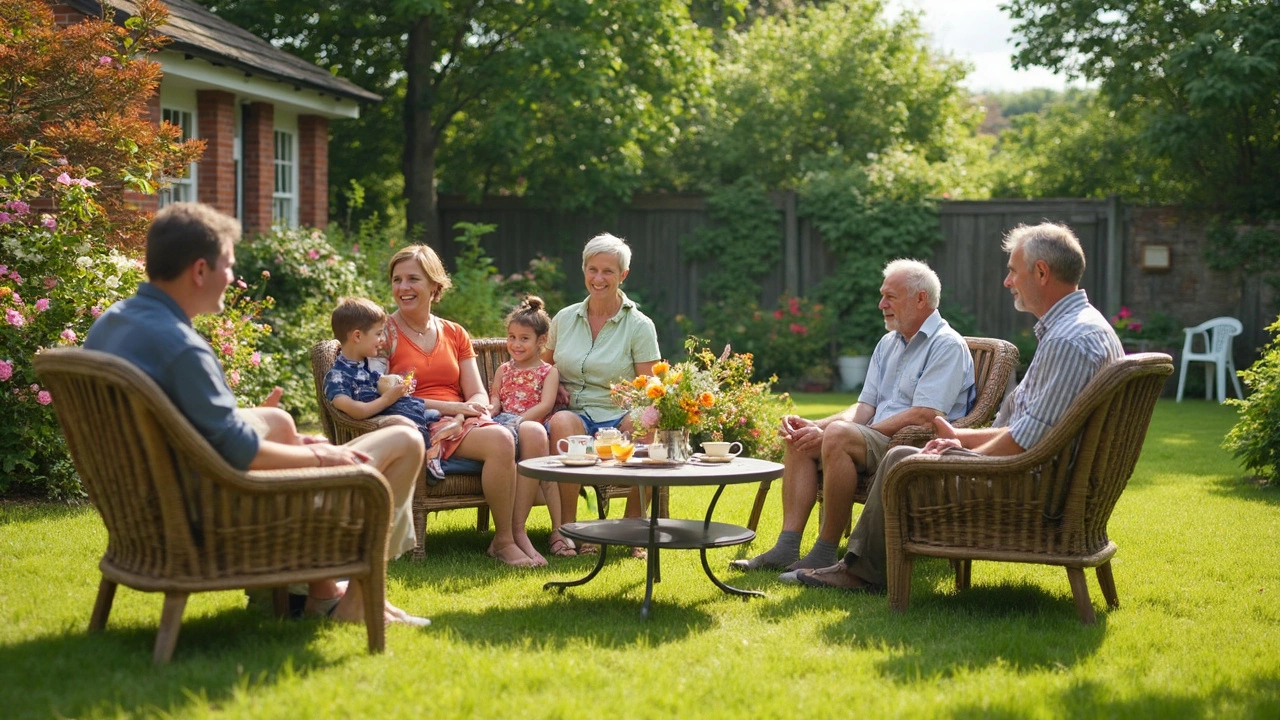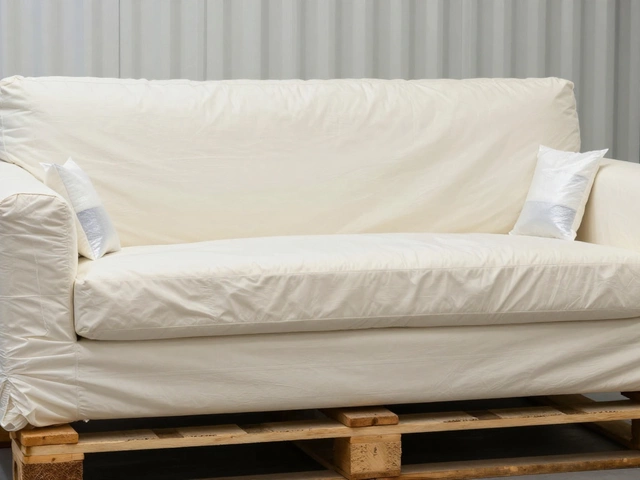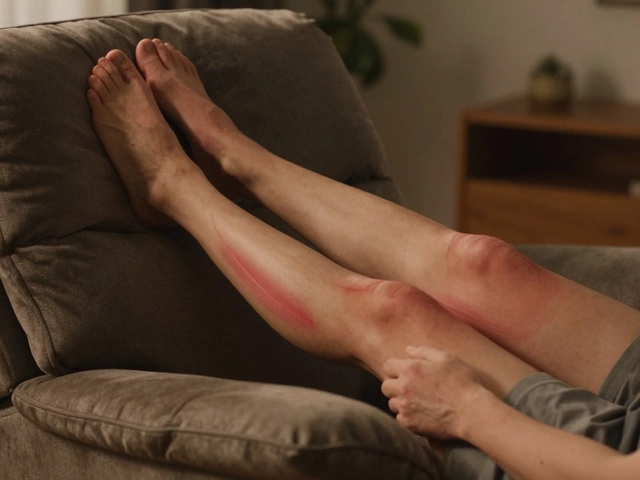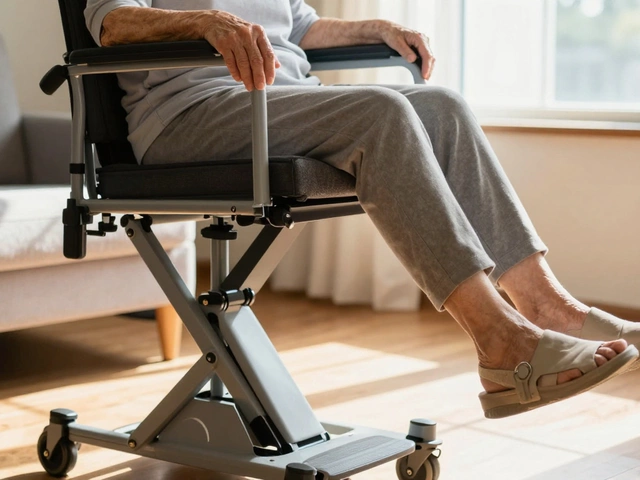Most people just set their garden chairs and tables right on the grass without a second thought. It's fast and easy, especially if you're getting ready for a barbecue or chasing after a ball-obsessed golden retriever like Max. But putting furniture straight onto your lawn isn't always a win-win.
Grass can get squashed or even die under heavy furniture. Some types of outdoor chairs and tables end up sinking into soft turf, tipping over, or picking up mud and moisture—no one wants soggy seat cushions or rust on their brand-new patio set. On the flip side, setting up on the lawn means less hassle than building a patio, and there's nothing quite like toes-in-the-grass comfort.
If you use the right kind of furniture—think sturdy legs, weather-proof materials, and a little help from some backyard hacks—you can make it work without ruining your lawn or your Sunday chill. The trick is knowing a few simple ways to avoid those ugly brown patches and wobbly seats.
- Quick Pros and Cons of Putting Furniture on Grass
- What Happens to Your Lawn
- Best Types of Furniture for Grass
- How to Protect Grass Under Furniture
- Managing Wobbly Chairs and Tables
- Smart Alternatives and Little Fixes
Quick Pros and Cons of Putting Furniture on Grass
Setting your garden furniture on grass might seem quick and easy, but it brings real upsides and downsides you need to know about. Sometimes it’s no big deal, but in other cases you might wish you’d done it differently.
- Pro: No Setup Needed — Skip the patio construction or dragging around heavy tiles. Just place your chairs and tables where you want and you’re good to go.
- Pro: Move Them Anywhere — You’re not locked into one spot. If you want to catch extra sun or follow the shade, just pick everything up and shift it around.
- Pro: Grass Feels Good — Let’s be honest: something about sitting right on a lawn feels way better than bricks or tiles. It’s softer, cooler, and even dogs like Max seem to think it’s more fun.
- Con: Wobbly Furniture — Most lawns are not perfectly flat, and chair legs love to sink into soft spots. Your drinks can get knocked over and dinners turn into juggling acts.
- Con: Damage to Grass — Heavy furniture or leaving your setup in the same spot for days squashes the grass flat. Sunlight can’t reach, and after a while you’ll see yellow or brown patches that look almost drawn on by a toddler.
- Con: Rust and Mold Risk — Moisture rises up from the soil and sticks to anything touching the ground. Metal bits can rust and cushions can stink or even grow mold if you’re not careful.
- Con: Dirt Stains — Rain turns your lawn into a mud trap. Furniture feet get dirty fast, and if you drag pieces back onto a patio or inside, you’ll trail chunks of grass and dirt with you.
If you’re only setting up for a few hours, these downsides don’t matter much. But for regular use or for those backyard setups that stay out all summer, it’s worth weighing the pros and cons before plopping your gear on the lawn.
What Happens to Your Lawn
If you plop heavy garden furniture right on the grass, you're basically laying out a “keep out” sign for sunlight and airflow—that grass underfoot doesn’t stand a chance. Lawn can get smashed down, lose its color, and start to die off if you leave chairs and tables there for more than a couple days at a time.
Researchers at the University of Minnesota point out,
“Lawn grasses need light, water, and air to survive. Blocking these for more than 48 hours leads to visible damage and thinning.”Stuff like wood and metal furniture legs put the squeeze on those blades, especially after a party or a few rainy days.
Here’s what really goes down:
- Patches turn yellow or brown where legs sit
- Grass under tables might die off completely after a week
- Mud and divots form when heavy items sink into soft or wet soil
- Thatch (the buildup of dead grass) can get worse
- Weeds sometimes slip in where grass gives up
You'll see the damage faster if it’s been raining or if your soil is soft or clay-heavy. Really hot days can toast the grass even more when airflow gets blocked. If you’re wondering how quickly this happens, check out the numbers below:
| Time Furniture Spends on Grass | Visible Lawn Damage |
|---|---|
| Under 24 hours | Minimal (slow recovery) |
| 2-3 days | Yellowing, flattening |
| 1 week | Brown or bare patches |
| Over 1 week | Permanent thinning, weeds move in |
Your garden furniture might look great, but unless you move it around, you’ll be left with patchy grass and headaches. If you start noticing stubborn yellow patches where your table was last weekend, it’s probably time to change things up. Don’t panic—you’ve got options to protect your lawn and keep your chill spot comfy.
Best Types of Furniture for Grass
Not all chairs and tables are happy sitting straight on your lawn. The garden furniture you pick can make or break your grass and your comfort. Here’s what actually works best on grass and why:
- Plastic Furniture: Lightweight, weatherproof, and easy to move. If the lawn gets soggy, plastic legs usually won’t sink much because of their wider bottoms. Just avoid super cheap stuff that cracks easily.
- Wicker or Resin: Synthetic wicker looks great and handles moisture like a champ. Plus, it usually has flat feet, which helps with stability on uneven ground.
- Aluminum Sets: Much lighter than steel. They won’t rust as fast, and they're easy to carry across your backyard if you want to mow or change things up.
- Wood Furniture: Teak or cedar hold up well to moisture, but watch out for mold or termites if you leave them on damp grass long-term. Wooden legs can sometimes sink, so look for thicker legs over spindly skinny ones.
Skip furniture with thin, pointy legs—think bistro tables or metal chairs with nail-thin feet. These can poke right into the turf, making furniture tippy and the grass bare. Go for options where the feet are wider and more spread out; they put less pressure on the blades and soil.
| Furniture Type | How it Handles Grass | Weather Resistance | Weight |
|---|---|---|---|
| Plastic | Great (wide legs, light) | High | Light |
| Wicker/Resin | Very Good (flat feet) | Very High | Medium |
| Aluminum | Good (doesn't sink much) | High | Light |
| Wood (Teak/Cedar) | Fair (can sink, needs thick legs) | Medium-High | Medium-Heavy |
| Steel | Poor (heavy, can rust) | Low | Heavy |
One trick: Snap-on plastic or rubber feet help protect both the furniture and the grass underneath. You can pick these up online in all kinds of sizes. If you’re mixing it up with picnic blankets or fold-out lounges, those work best for quick setups—just remember to bring them in if the grass is damp.
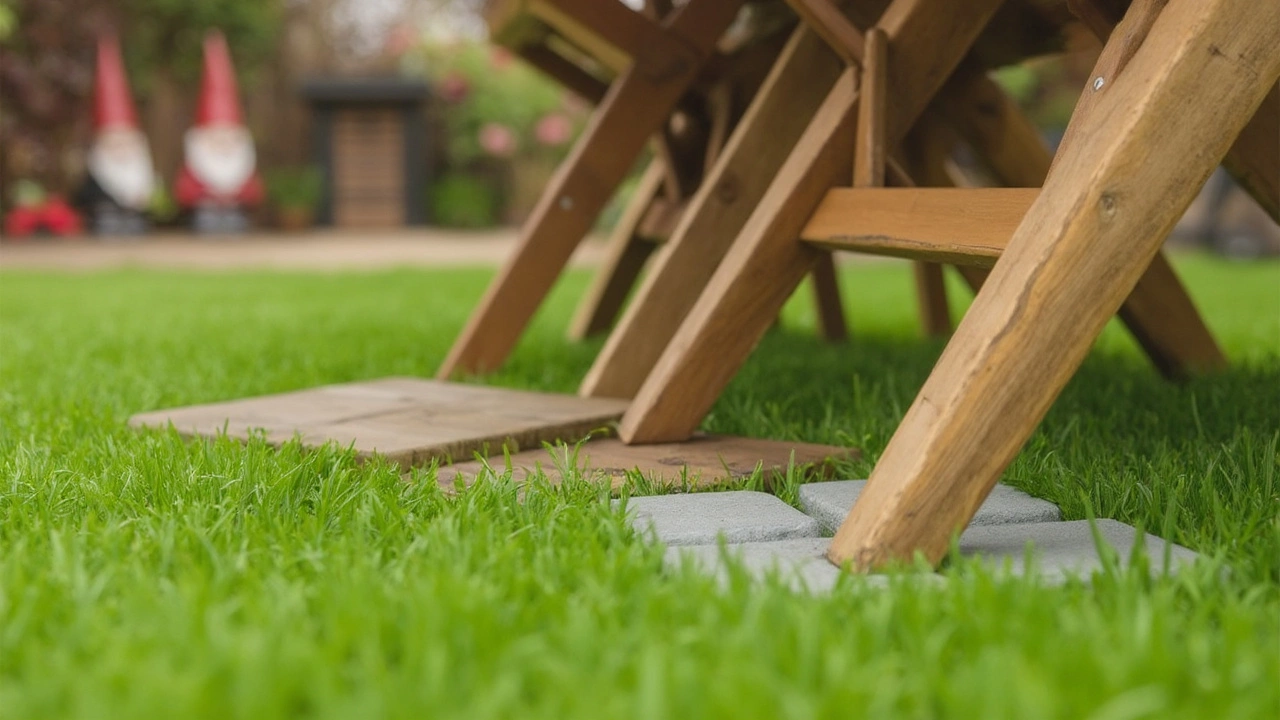
How to Protect Grass Under Furniture
If you love placing garden furniture out on the lawn but hate ugly yellow patches that last for weeks, you’re definitely not alone. The main problem? Lack of sunlight and air gets those spots turning brown faster than you can flip a burger. Even worse, heavy chairs and tables can actually crush the grass stems, which makes the damage feel kind of permanent if you’re not careful.
There are a few tricks to keep your green space looking sharp, even after a long weekend of use. Here’s what actually works for most people:
- Move your furniture often: Try shifting your setup just a little every couple of days. Grass can bounce back fast if it isn’t covered for too long—usually 48 to 72 hours is the sweet spot.
- Use furniture pads or coasters: Slide wide rubber or plastic caps under legs. These spread the pressure around so there’s no deep sinking, and they help protect against rust stains, too.
- Lay out outdoor rugs or mats: Rubber-backed outdoor rugs act as a barrier and give your chairs a good base. Make sure the mat is breathable—some cheap ones smother the grass.
- Raise furniture off the surface: Simple blocks, stepping stones, or pavers under the legs give the grass more airflow and prevent muddy messes after rain.
Not convinced this matters? A 2024 UK gardening survey found that grass spots caused by furniture can take 10-26 days to recover, depending on weather and furniture weight. If your family or pets spends lots of time in the yard, that’s a long stretch looking at beaten-up turf.
| Furniture Type | Average Damage Time (days) | Best Protection Trick |
|---|---|---|
| Metal chairs | 18 | Rubber leg pads or small pavers |
| Plastic chairs | 12 | Outdoor mat or frequent moving |
| Wood benches | 24 | Furniture risers and rotation |
Try to keep an eye on moisture, too. Wet grass crumples faster, and heavy stuff with tiny legs turns those soft spots into craters. After a rainstorm, wait until things dry out before putting the furniture back. You’ll see less damage and way fewer muddy pawprints from your dog.
Managing Wobbly Chairs and Tables
If you’ve ever tried to eat a burger in your backyard, only to have your drink slide off a wobbly table, you know it’s no joke. Furniture legs can sink or tilt when they sit on uneven ground, and that’s pretty common on grass. Lightweight chairs are worst for this, especially the kind you find on sale at big box stores—they just don’t have the heft to settle evenly.
The main culprit? Uneven soil and the way grass compresses under weight. Even popular metal bistro sets can rock or lean after just a day or two outdoors. According to a survey by Gardeners’ World in 2023, nearly 65% of people who put garden furniture on the lawn said wobbly chairs were their biggest gripe.
- Choose wide, flat feet: Tables and chairs with broad feet (think thick plastic or rubber attachments) are less likely to dig into dirt or wobble.
- Add DIY feet: Slip tennis balls, rubber caps, or inexpensive furniture pads onto each leg. These help spread the weight and keep furniture steady.
- Level the ground: If you can, spot-level your lawn where you want to set up. Just stamp down lumpy bits or fill small dips with a scoop of garden soil.
- Use a base: Put down patio slabs, wooden planks, or even strong outdoor mats under chair and table legs to keep everything on the level. Hardware stores sell outdoor-minded options that won’t rot or get soggy.
If you’re the numbers type, check out this quick table on stability upgrades and how much wobbly seats dropped when owners used them, based on a 2024 backyard poll:
| Stability Hack | Drop in Wobbly Incidents (%) |
|---|---|
| Wide Rubber Feet | 70 |
| Tennis Balls/Caps | 62 |
| Outdoor Mats | 55 |
| No Fixes | 0 |
Keeping chairs and tables firm makes everything more relaxed. You aren’t dodging spilled drinks or balancing plates, and your stuff isn’t getting ruined because it’s always tipping over. Even just a couple of these tricks can save a whole lot of hassle next time you’re outside.
Smart Alternatives and Little Fixes
If your lawn looks more like a patchwork after every backyard hangout, it’s time for some practical fixes. You can still have your favorite garden furniture on display without trashing your grass or spending big cash on hardscaping. Smart swaps and little tweaks work wonders.
One simple trick: use furniture leg caps or wide tiles under chair and table legs. This spreads out the weight, which means your furniture won’t sink in or leave deep marks. Plastic saucers made for plant pots do the job fast and cheap. Another easy option is using outdoor mats or rugs. These not only stop the legs digging in but also keep dirt off your seat cushions when you plop down after a game of fetch with Max. Just pick rugs made for outdoors so they don’t get soggy or gross.
If you're dealing with heavy tables or benches, moving things around every few days is an old gardener’s hack. By shifting furniture even a little, you give squashed grass a chance to bounce back. You can even mow a little higher in the areas where your setup sits—taller grass handles the pressure better. For folks who really want a no-fuss backyard, try building a simple gravel pad in your favorite chill spot. After a bit of digging and a layer of weed fabric, gravel gives a dry, level base for furniture, and the grass can recover somewhere else.
Here’s a quick look at easy fixes and how much time and money they usually take:
| Fix | Average Cost | Effort Level | Who Should Use It? |
|---|---|---|---|
| Furniture leg caps/tiles | $2–$10 per leg | Low | Anyone with lightweight chairs or tables |
| Outdoor mats/rugs | $20–$80 | Low | For comfort & reducing mess |
| Moving furniture weekly | $0 | Low | Anyone with time & grass-loving pets/kids |
| Small gravel pad | $40–$120 | Medium | Those wanting less upkeep |
The best fix for you depends on your yard, your furniture, and how much effort you’re up for. Mats and plates work fast for small gatherings. Gravel or paver pads work for folks wanting a sturdy spot for the whole summer. Choose what fits your setup, and your lawn won’t have to suffer every time you want to throw a party or chill outside.

